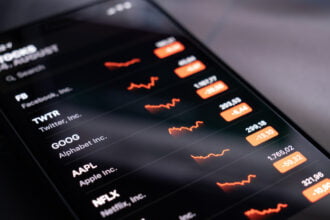Last year, in an article that talked about the impact big data has on finance, we said that location data sets can make investing easier. Companies spent nearly $11 billion on financial analytics in 2020. A large portion of this market is driven by investment companies and mutual funds. This is because accurate data about consumer movement can help you know about consumer trends and corresponding market movements. Today, we are going to look at the potential influence big data has on personal finance in detail.
Big Data & Investment Today
We will start by talking briefly about the state of big data in the practice of investing. In the article that we wrote last year, we talked about how data especially location data can be used in market management. Many investment funds and financial firms have come to realize the importance of big data and are using these data to help them make investing decisions and find big opportunities in small-cap stocks.
The use of big data and AI has changed the investment process in many ways (and through big companies like JP Morgan, SoFi, BlackRock, and so on. In some instances, AI labs are used to analyze the performance of investors and recommend changes that give significant results quickly.
In other cases, advanced AI applications use a deep-learning approach to sift through big data to predict the prices of stocks in the near future. For instance, real-time car purchases can help predict the price of Rolls Royce shares in the near future. An approach like this can give mixed results but its impact when it comes to genuine predictive analytics in large-scale investing and venture capital funding and investment is huge.
There are no full AI operations that focus explicitly on using location data. However, deep-learning approaches are comprehensive in theory. They can use this type of data and share company data, prices, asset histories, macroeconomic indicators, and so on. Location data can be part of an analytical effort.
Automated Investing Tool
Even though many investment firms can use big data and act on it quickly, ordinary people cannot do the same. A true day trader who can access adequate data on things like locations can make quick decisions when reacting to new information as they have the information that can help them make decisions.
However, it is more realistic for those who manage stock portfolios to try to leverage data that relates to broader movements. Some of the automated investing tools can be used particularly in some online depot tools. What comes to your mind when you hear the word automated tools? I am sure that most of you will think of mobile apps like Stash and Acorns that can manage investments on your behalf. These apps can enable you to create a portfolio, or a type of collection based on your risk aversion and/or category preferences and makes it possible for money to work for you in an automated way.
Automation can be used in more traditional trading methods, and it brings an interesting way of leveraging big data. For instance, some platforms allow investors to place profit and loss limits on their positions. This enables investors to set up automated safeguards that will prevent further losses or lock in profits when a certain profit has been achieved or loss has occurred. It does this by closing positions when a certain price limit is reached be it losses or profits.
The good thing is that as an investor using automation, you will still be the one to determine entry points on individual stocks. So, with automation, you can set up your investments and contracts and leave the rest to automation as it will manage them on your behalf. How does this relate to big data? It is more likely for an investor to make a long-term trade than a short-term trade based on big data.
To help you understand this better, consider consumer location data based on a product release vs. data based on a more significant trade. For instance, data on a surprise hit film may suggest a short-term surge in the number of moviegoers. A large fund or day trader can take advantage of this quickly by investing in major cinemas.
On the other hand, an average investor may not recognize and act quickly enough on that data. For instance, if consumer location data shows that people have returned to shopping malls after abandoning them because of the effects of COVID 19, an investor can choose to buy stock in department stores and set automated limits. Automated options encourage responsible long-term positions making an investor feel more comfortable trying to leverage particular types of data.
Location and Digital Payment
I am sure that you have noticed that one of the major problems with big data in personal investments is that the best analysis and most information can be accessed by giant funds and financial companies. Even though there are ways for people to access more advanced analysis of investment-related data, it is not easy to compete on a daily basis.
In some instances, the significant funds will interpret data and take advantage of a trend quickly that everyone else may not have much opportunity to do so. This is what makes location data interesting for individual investors. Comprehensive data analysis that leading financial firms do may be difficult for an individual investor to manage or access.
By contrast, location data may become more convenient in the future. How will this happen? This is based on the fact that electronic payments have increased. In fact, by 2019, it is estimated that 2.1 billion people use a digital wallet and moving forward, it is highly likely that moving forward, the number of those who have used a digital wallet is likely to increase as more and more people will embrace digital payments.
Electronic payments are meant to provide a convenient and more secure payment alternative to both consumers and businesses. Electronic payments are also more traceable as it is easy to know those who send money to you.
Soon, information about where consumers are spending digitally will be accessed easily whether through payment processing company reports, public ledgers, and so on. This will make it possible for individual investors to access consumer location data and use it easy compared to other forms of relevant data.











